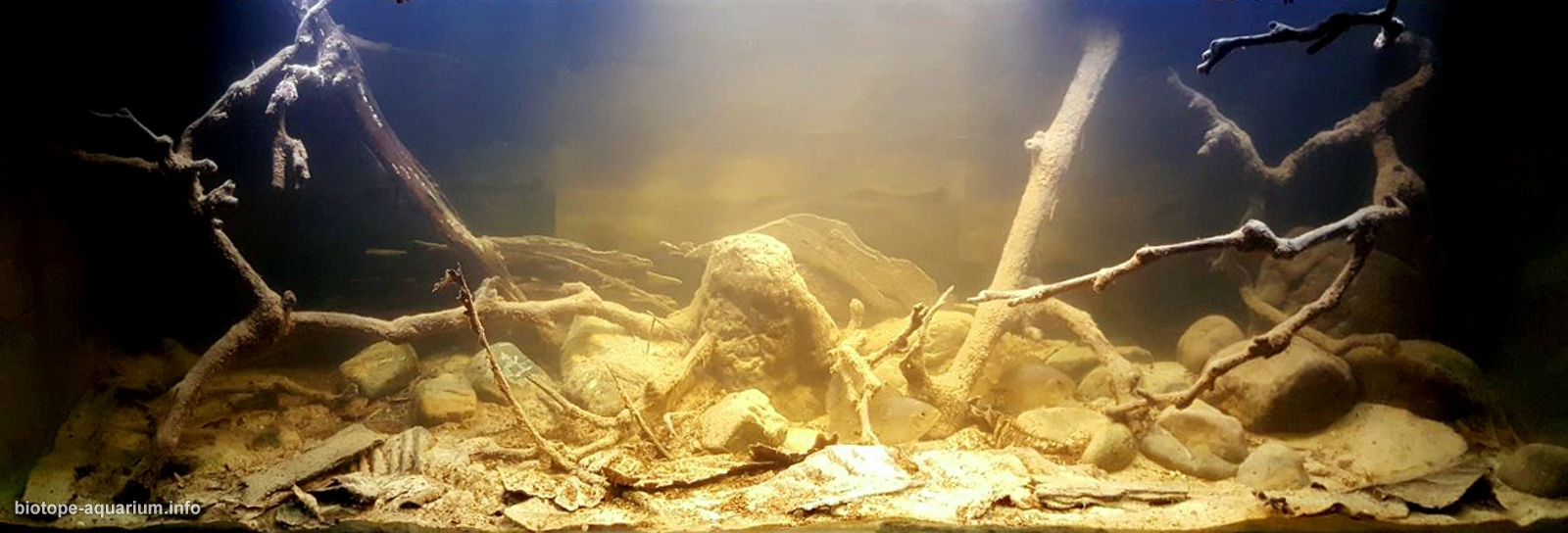A scenery from the village of Nuesochihua, near Usumacinta river
86th place in Biotope Aquarium Design Contest 2017
![]() Turkey. Zafer Işık
Turkey. Zafer Işık

Volume: 300 L
Dimensions: 150x45x45 cm
List of fishes: 4 baby Paratheraps synsplus
List of plants: N/A
Description of decorations: The ground covered with sea and creek sand. The stone rock was adorned with. The leaves of Eriobotrya japonica Vitaceae are covered with branches and roots.
Description of equipment: fluval u 2 filter pover led brighten floresan brighten, Eheim Jager 300 Watt heater
Water parameters: Temparature 28 ph 7.8 water hardness medium
Description of the area surrounding the biotope: The river Usumacinta,which rises in Guetemala,has the lenght of 1000 kilometres and the basin of 106000 m2.It forms some part of the border between Mexico and Guetemala.It is one of the longest rivers of whole Mexico and middle America.And it is the house of 112 species of fish which is known.It also has a cultural and touristic importance with its tropical rain forests.We can still observe old Mayan culture there as well.
Description of the underwater landscape of the biotope: Lower part sand and thin gravel Dry trees, rocky areas, stone plates and caves Shelter and hiding places Muddy slow running water.
Description of the parameters of the habitat: Water slightly turbid temperature 28 degrees moderate hardness pH 7.0 8.0
List of fishes: Paratheraps fenestratus, Paratheraps bifasciatus, Paratheraps synspilus, Paratheraps melanurus, Paratheraps breidohri, Petenia splendida
List of plants: N/A.
Threats to the ecology: Deforestation: It is a big threat for the rich sources of forest in the region.Deforestation can be clearly observed near the border of Mexico.It generally starts with the construction of the roads and goes on with the settlement of people and tourism.Besides this the state of Tobasco,Mexico has more than 7000 oil wells and 200 oil companies.Some experts of nature and water who come from America,Mexico and Guetemala go on their studies on this environmental pollution.
Sources of information: youtubes, planeta com, books.google.com.tr, www.sierrarios.org
